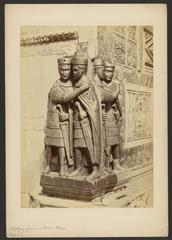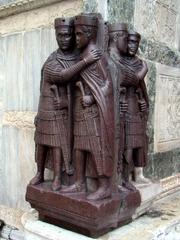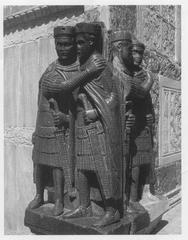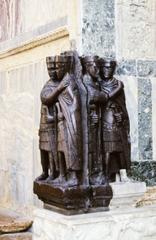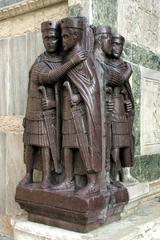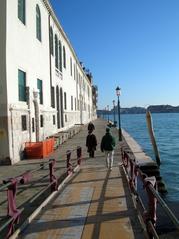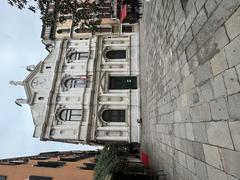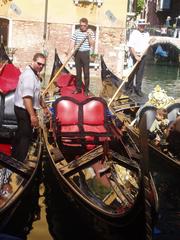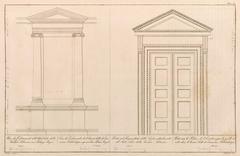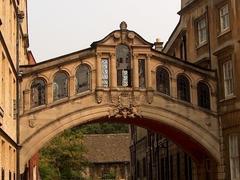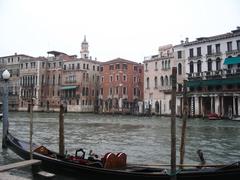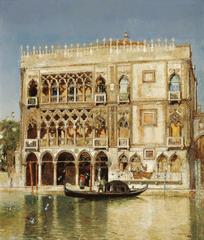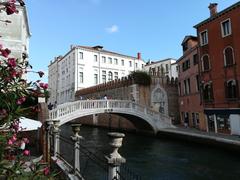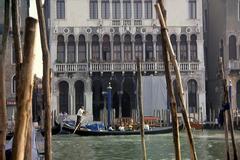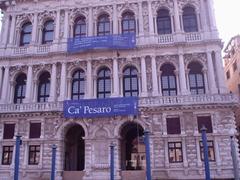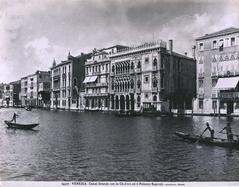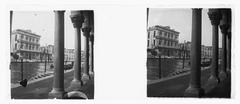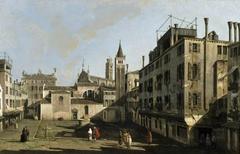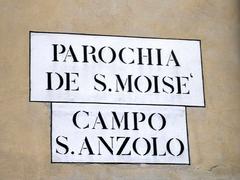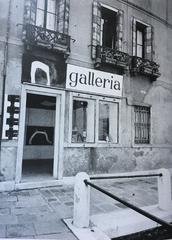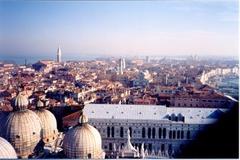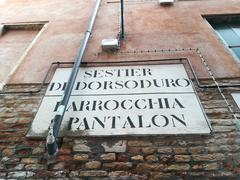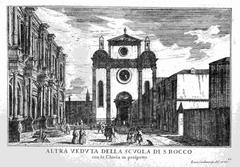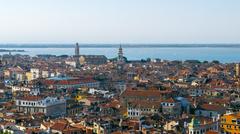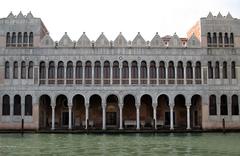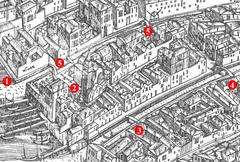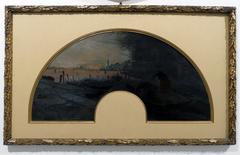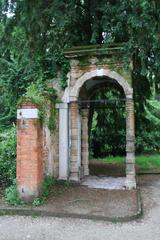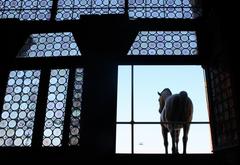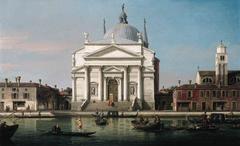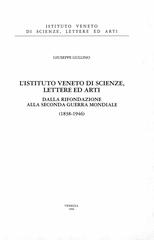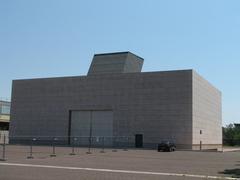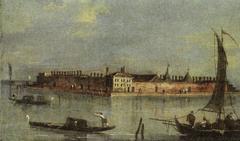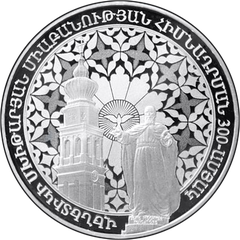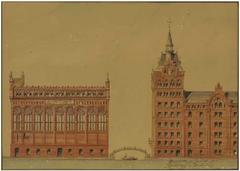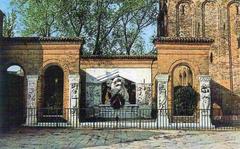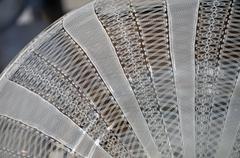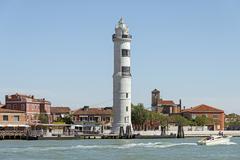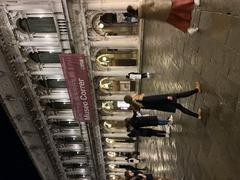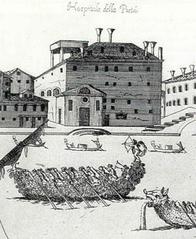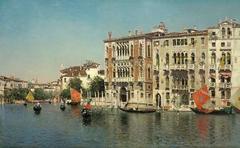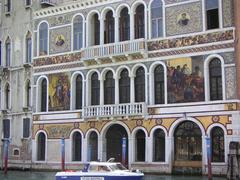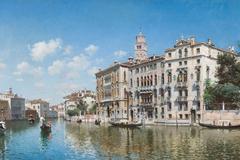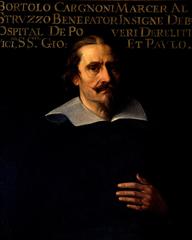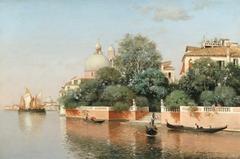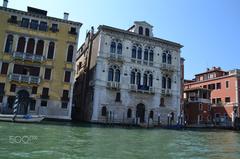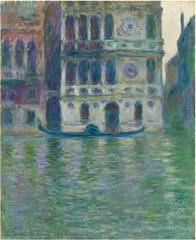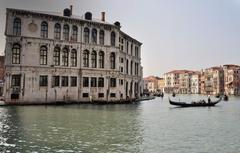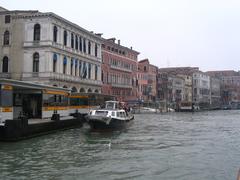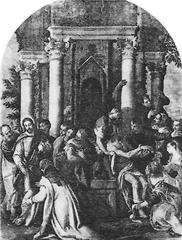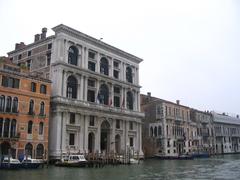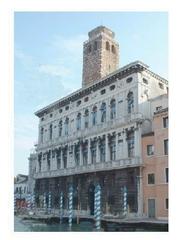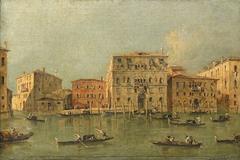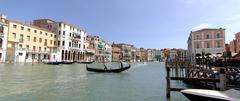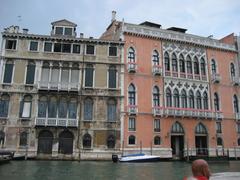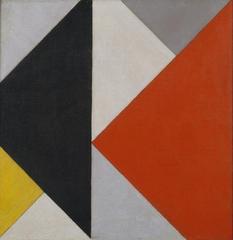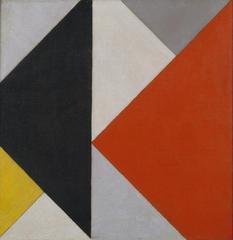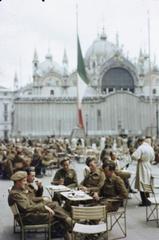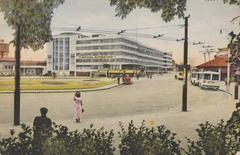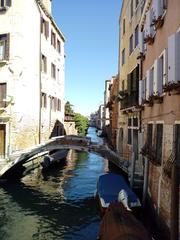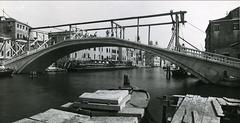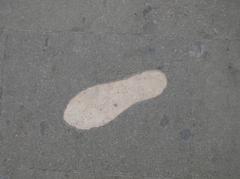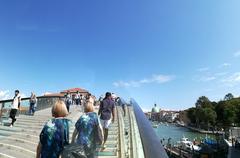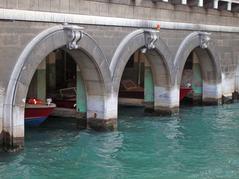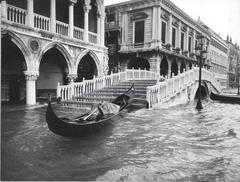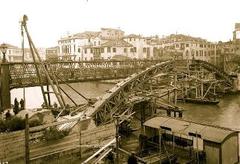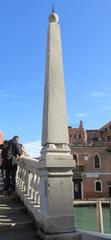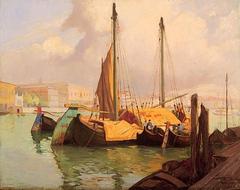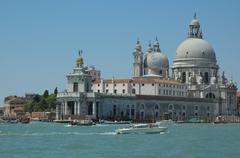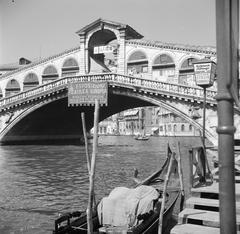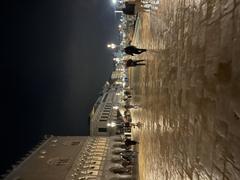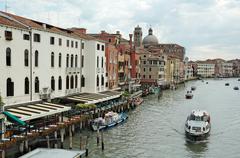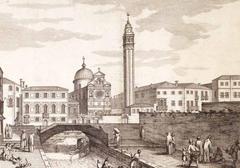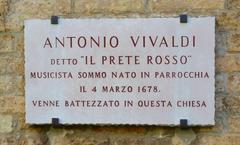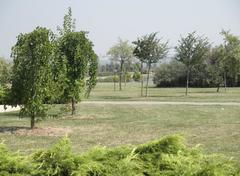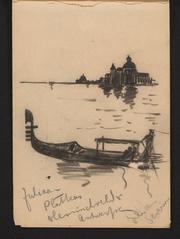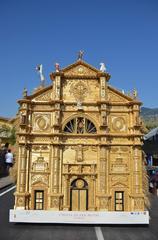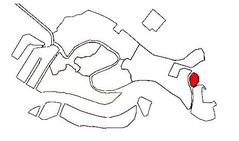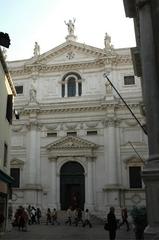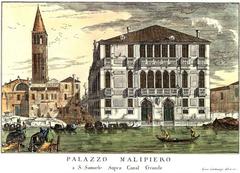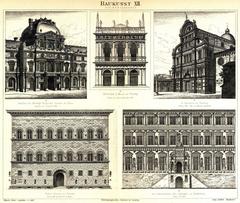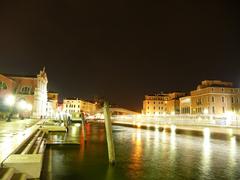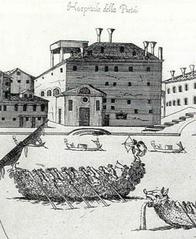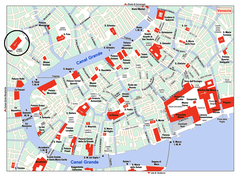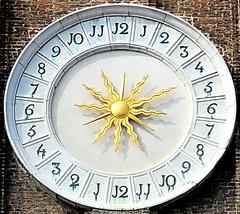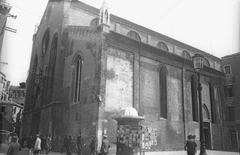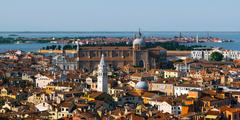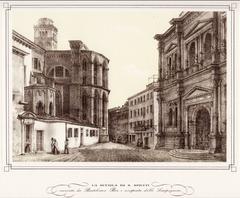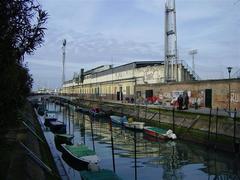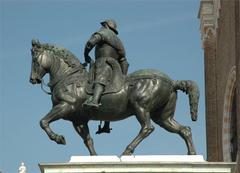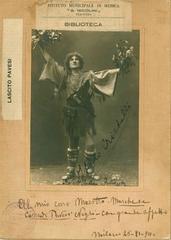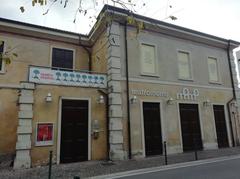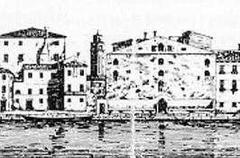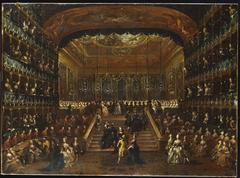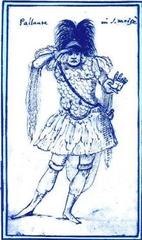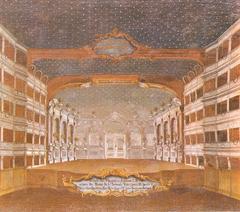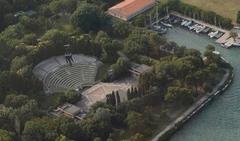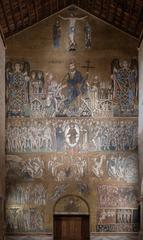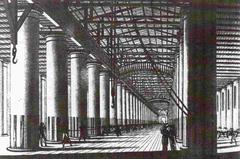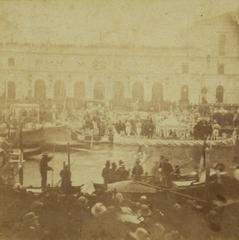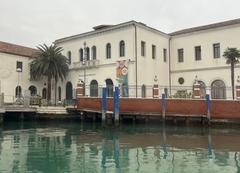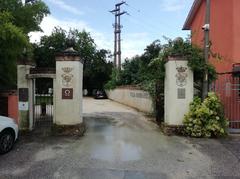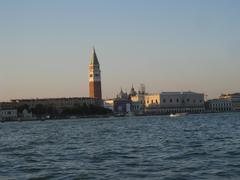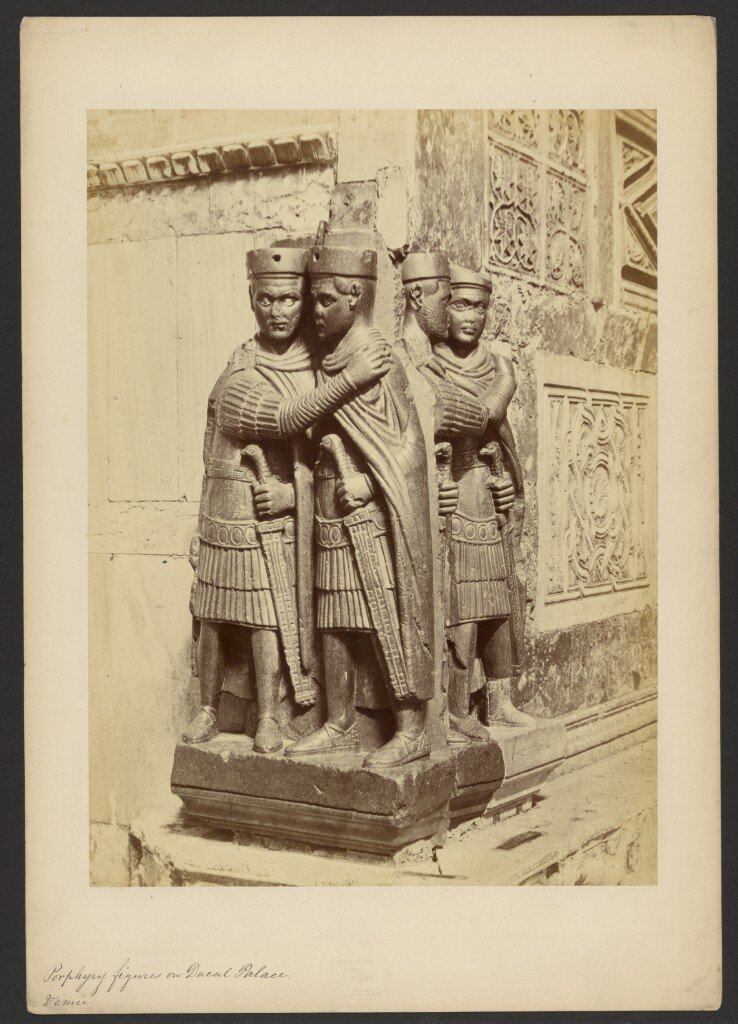
Visiting Hours, Tickets, and Historical Significance of Piazzetta San Marco, Venice
Date: 01/08/2024
Introduction
Welcome to the Piazzetta di San Marco, an iconic landmark that serves as the gateway to Venice’s rich history and architectural splendor. Often referred to as the ‘little Piazza,’ Piazzetta San Marco is an extension of the renowned Piazza San Marco, bridging the square with the Venetian Lagoon. Historically, this area has been the focal point of Venetian public life, playing host to a myriad of events and acting as a reception point for ambassadors and VIPs, symbolizing Venice’s power and openness to the world (Bonjour Venise). Flanked by some of Venice’s most significant architectural landmarks such as the Doge’s Palace and the Biblioteca Marciana, the Piazzetta is not only an architectural marvel but also a cultural and social hub that reflects the grandeur of the Venetian Republic. This guide will provide a comprehensive overview of the historical background, visitor tips, and must-see spots, ensuring you make the most of your visit to this cherished Venetian site.
Table of Contents
- Introduction
- Historical Background of Piazzetta di San Marco
- Visitor Information and Travel Tips
- Nearby Attractions
- Historical Events and Cultural Significance
- The Role of the Piazzetta in Modern Venice
- Preservation and Challenges
- FAQ
- Conclusion
Historical Background of Piazzetta di San Marco
Early Development and Architectural Significance
The Piazzetta di San Marco, often referred to as the ‘little Piazza,’ serves as a crucial extension of the larger St. Mark’s Square, connecting it to the Venetian Lagoon. This open space has been a focal point of Venetian public life since its inception. The Piazzetta lies between the Doge’s Palace on the east and Jacopo Sansovino’s Libreria, which houses the Biblioteca Marciana, on the west. The construction of the Libreria began in 1537 and was extended by Vincenzo Scamozzi in 1588/91, following Sansovino’s death. Palladio, a renowned architect, described the building as ‘the most magnificent and ornate structure built since ancient times.‘
The Granite Columns
One of the most iconic features of the Piazzetta di San Marco is the pair of granite columns that stand at its open end, facing the lagoon. These columns were erected around 1268 and have significant historical and symbolic importance. The column on the right, as you face the lagoon, supports a statue of Saint Theodore, the patron saint of Venice before the relics of Saint Mark were brought to the city in 828. Saint Theodore is depicted holding a spear and slaying a dragon, symbolizing the triumph of good over evil.
The column on the left features the winged Lion of St. Mark, the symbol of the city and its patron saint. This lion is a representation of Saint Mark and has become one of the most recognizable symbols of Venice. The columns have witnessed various historical events, including public executions and gambling activities, making them silent witnesses to the city’s tumultuous past.
The Doge’s Palace and Biblioteca Marciana
The Doge’s Palace (Palazzo Ducale) is another architectural marvel that flanks the Piazzetta. This Gothic masterpiece served as the residence of the Doge, the supreme authority of the former Venetian Republic. The palace also housed the political and administrative offices of the government. Its construction began in the 14th century and continued over several decades, incorporating various architectural styles and elements.
On the opposite side of the Piazzetta lies the Biblioteca Marciana, also known as the Library of St. Mark. Designed by Jacopo Sansovino, this building is considered one of the most important examples of Renaissance architecture in Venice. The library was intended to house the vast collection of manuscripts and books donated by Cardinal Bessarion in 1468. The building’s construction started in 1537 and was completed in the late 16th century, making it a significant cultural and intellectual hub of the city.
Visitor Information and Travel Tips
Visiting Hours and Tickets
The Piazzetta di San Marco is open to the public 24/7, and no tickets are required to explore the open space. However, if you wish to visit the Doge’s Palace or the Biblioteca Marciana, it’s advisable to check their specific visiting hours and ticketing information on their official websites.
Accessibility
The Piazzetta is generally accessible to visitors with mobility issues, though the uneven cobblestone surfaces may pose some challenges. It’s recommended to use appropriate footwear and consider arranging for assistance if needed.
Nearby Attractions
- St. Mark’s Basilica: Just a short walk from the Piazzetta, this stunning basilica is a must-see for its intricate mosaics and impressive architecture.
- Campanile di San Marco: The bell tower offers breathtaking views of Venice and is located within St. Mark’s Square.
- Rialto Bridge: A picturesque and historic bridge over the Grand Canal, perfect for a leisurely stroll or photo opportunities.
Historical Events and Cultural Significance
The Piazzetta di San Marco has been the stage for numerous historical events that have shaped the course of Venetian history. One of the most notable events was the public execution of Marino Faliero, the 55th Doge of Venice, in 1355. Faliero was executed for attempting a coup d’état against the Venetian Republic, and his death marked a significant moment in the city’s history.
The Piazzetta has also been a center for public celebrations and gatherings. During the Venetian Republic, it was common for the Doge to address the public from the balcony of the Doge’s Palace, with the Piazzetta serving as the gathering place for the citizens. This tradition continued for centuries, making the Piazzetta a symbol of Venetian civic life and governance.
The Role of the Piazzetta in Modern Venice
Today, the Piazzetta di San Marco remains a vital part of Venice’s cultural and social landscape. It is a popular destination for tourists who come to admire its architectural beauty and historical significance. The Piazzetta offers stunning views of the Venetian Lagoon and the island of San Giorgio Maggiore, making it a favorite spot for photography and sightseeing.
The area is also home to several important cultural institutions, including the National Archaeological Museum and the Correr Museum, both of which offer visitors a glimpse into Venice’s rich history and artistic heritage. The Piazzetta’s cafes and shops provide a vibrant atmosphere, making it a lively and bustling part of the city.
Preservation and Challenges
Preserving the historical and architectural integrity of the Piazzetta di San Marco is a significant challenge for the city of Venice. The area is susceptible to flooding, particularly during the high tide season known as ‘acqua alta.’ Efforts have been made to mitigate the impact of flooding, including the installation of temporary walkways and the implementation of the MOSE project, a system of mobile barriers designed to protect the city from high tides.
In addition to environmental challenges, the Piazzetta faces the pressures of mass tourism. The influx of visitors can strain the infrastructure and pose risks to the preservation of the historical monuments. Efforts are ongoing to balance the needs of tourism with the preservation of Venice’s cultural heritage, ensuring that the Piazzetta di San Marco remains a cherished and well-preserved part of the city’s history.
FAQ
What are the visiting hours for Piazzetta di San Marco?
The Piazzetta di San Marco is open 24/7 to the public.
Are there guided tours available at Piazzetta di San Marco?
Yes, guided tours are available and can be arranged through various tour operators in Venice.
What is the best time to visit Piazzetta di San Marco?
The best time to visit is early in the morning or later in the evening to avoid the crowds.
Is the Piazzetta di San Marco accessible for people with disabilities?
The Piazzetta is generally accessible, but the uneven cobblestone surfaces may pose challenges.
Conclusion
Piazzetta di San Marco stands as a testament to Venice’s rich history and architectural grandeur. From its early development and the erection of its iconic granite columns to its role as a center of public life and cultural significance, the Piazzetta has played a crucial role in shaping the identity of Venice. Today, it continues to be a vibrant and essential part of the city’s landscape, attracting visitors from around the world who come to experience its beauty and historical significance (Nomads Travel Guide). As you explore the Piazzetta, you’ll encounter stunning views of the Venetian Lagoon, the island of San Giorgio Maggiore, and significant cultural institutions like the National Archaeological Museum and the Correr Museum. These spots not only offer a glimpse into Venice’s rich history and artistic heritage but also provide a lively and bustling atmosphere that is quintessentially Venetian. Efforts are ongoing to balance the needs of tourism with the preservation of Venice’s cultural heritage, ensuring that Piazzetta di San Marco remains a cherished and well-preserved part of the city’s history for future generations.
For more tips on exploring Venice and staying updated, download our mobile app Audiala, check out our other related posts, or follow us on social media for the latest updates.
References
- Bonjour Venise. (n.d.). Piazzetta Venice. Bonjour Venise.
- Nomads Travel Guide. (n.d.). Visiting Piazza San Marco. Nomads Travel Guide.
